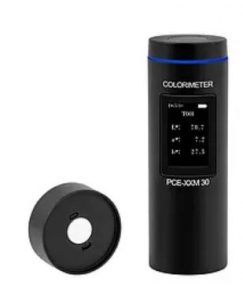The Science Behind Spectrophotometer And Colorimeters: How They Measure Color
Color is more than a visual experience in a world dominated by aesthetics and functionality; it transmits information, triggers emotions, and influences decision-making. Food, cosmetics, textiles, and manufacturing industries all rely largely on accurate color measurement to maintain product uniformity, quality, and brand identity. The ability to correctly measure color is not only an aesthetic matter, but also a functional necessity, affecting consumer pleasure and product performance. Let’s take a look at the importance of color measurement, the concepts of spectrophotometers and colorimeters, and the science behind how they precisely measure color.
What are Spectrophotometers and Colorimeters?

Spectrophotometers and colorimeters are advanced instruments used to scientifically measure color. Spectrophotometers are very versatile, measuring the full light spectrum. Colorimeters, on the other hand, focus on specific color parameters and are frequently used in quality control applications.
How Spectrophotometers Measure Color?
Spectrophotometers use two primary strategies to operate: reflectance and transmittance. Reflectance measurements include shining light onto a sample surface and measuring the amount of light reflected at different wavelengths. This method is often used for solid materials such as fabrics, paints, and polymers.
Transmittance measurements, on the other hand, entail passing light through a transparent or translucent sample and measuring the amount of light that emerges on the other side. This method is extensively used in the analysis of liquids, films, and glass.
The interaction of light with the sample is the fundamental principle underlying both approaches. The spectrophotometer divides light into wavelengths, passes it through the sample, and measures the intensity of the transmitted or reflected light at each wavelength. The resulting spectrum is subsequently examined to quantify the sample’s color properties, which are frequently stated in terms of colorimetric values such as L*a* b*.
How Colorimeters Measure Colour

Colorimeters, while similar in concept, take a more specialized approach to color measuring. They are intended for specific applications and are easier to use than spectrophotometers. The measurement procedure consists of three major steps: illumination, light detection, and data processing.
- Illumination: Colorimeters emit a controlled light source onto the sample surface. The type of illumination used depends on the application and the qualities of the sample.
- Light Detection: The colorimeter measures the intensity and color of the light reflected or transmitted by the sample. The detector collects light and turns it into electrical impulses.
- Data Processing: The electrical impulses are then processed to calculate color parameters based on established color models. RGB (Red, Green, Blue) and L*a*b* are two common color spaces.
Nax Colorimeters and Spectrometers for Optimal Color Consistency
Colorimeters and spectrophotometers both play critical roles in assuring color accuracy across a wide range of industries. Nax colorimeters and spectrophotometers are excellent alternatives for individuals looking for precision and dependability in color measuring. Whether you are in the textile, paint, or food industries, investing in Nax colorimeters and spectrophotometers ensure that your products satisfy the highest standards of color consistency, Embrace the science of color measurement and improve your product quality with modern spectrophotometers and colorimeters from Nax Instruments.



